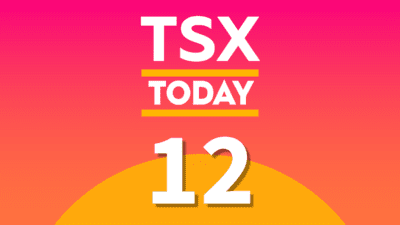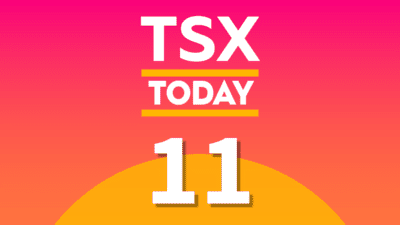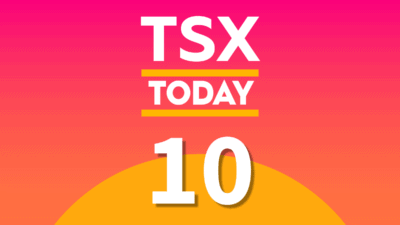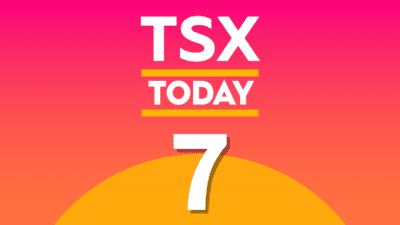In the last five trading days, the S&P 500 Index has slipped 3% as United States inflation rose to 3.5% in March. This inflation number is important to many economies, including Canada, America’s largest supplier of oil and gas.
Why has the TSX been falling since April 9?
The Federal Reserve has been increasing interest rates to pull money out of the economy and reduce inflation. If inflation doesn’t come down, the Fed may not cut interest rates. Economists even reduced their forecast. Earlier, they expected the Fed to announce three rate cuts in 2024, and now they expect one. You may ask why you should be concerned with the U.S. Fed rate decisions.
The Bank of Canada kept the interest rate at 5% to match the U.S. Fed. If Canada cuts its interest rate, it will reduce the Canadian dollar’s value against the U.S. dollar. Companies with debt in U.S. dollars will have to shell out more money, negatively impacting their profits. Hence, the TSX, especially dividend stocks, is sensitive to the U.S. Fed’s decisions and U.S. inflation numbers.
Why you probably shouldn’t wait for the market pullback
The interest rate hike began in April 2022. Going by the above logic, the S&P 500 should have dipped through this time. The market fell 18% between April and September 2022, but it picked up momentum and surged 38% since then, despite interest rate hikes. Leading the gains were technology stocks that were worst hit between April and September 2022.
Those who waited for the market pullback in 2023 missed out on the future rally brought by the Chat GPT frenzy. Nvidia (NASDAQ:NVDA) was the biggest beneficiary of the ChatGPT movement. The stock doubled in the first six months of 2023. If you waited for a pullback to buy the stock, you missed the 105% rally after that.
While it is true that buying the dip and selling the rally helps make better returns, it is also true that nobody can time the market. The buy-the-dip and sell-the-rally strategy works well in a cyclical, range-bound stock like Enbridge. However, these stocks can’t make you millionaires. You need a mix of market outperformers, market performers, and contrarian stocks that go against the market to build wealth.
Why is the market unpredictable?
Holding cash gives negative returns as money depreciates at the rate of inflation. What $100 could buy you five years back can’t buy you that today. When we talk about stocks, there are a plethora of things that impact their momentum. While high interest rates can pull down the real estate sector, they serve well for mortgage companies or those with low debt.
The geopolitical tensions shot up oil stocks even when the energy sector is undergoing a renewable energy transition. Nvidia, which was grappling with excess graphic cards in the secondary market after the crypto bubble burst in 2022, became a growth darling in 2023. So many sectors and factors affect the market and add the element of investor sentiment.
All the above elements make the market unpredictable as the level of influence one factor has on the market also keeps changing. For instance, high interest rates should have pulled the market into a recession, but the growth remained sticky.
Instead of timing the market, if you go with the market flow, you won’t miss an opportunity to invest.
Earning through dollar-cost averaging
You could consider investing a fixed amount every month in an index fund. iShares Core S&P 500 Index ETF (CAD-Hedged) (TSX:XSP) invests in the stocks listed in the S&P 500 index in a similar weightage to generate similar returns as the market.
The exchange-traded fund (ETF) can give you diversified exposure to stocks of different sectors and sizes (large, mid, and small cap). This ETF can give market returns. However, invest in growth stocks like Nvidia that could outperform the market. Also, invest in dividend stocks that could give passive income, even in a bear market.
 2-for1 Sale
2-for1 Sale







